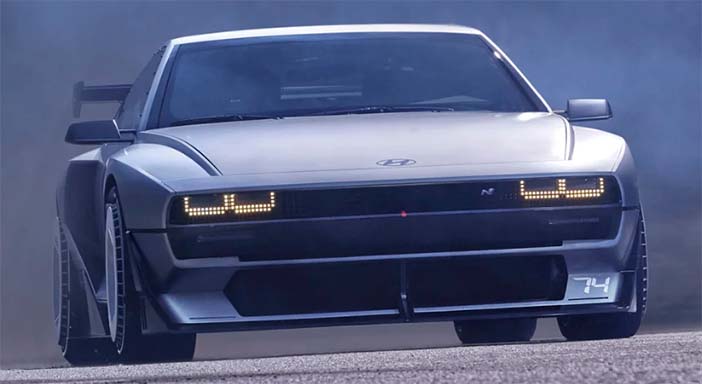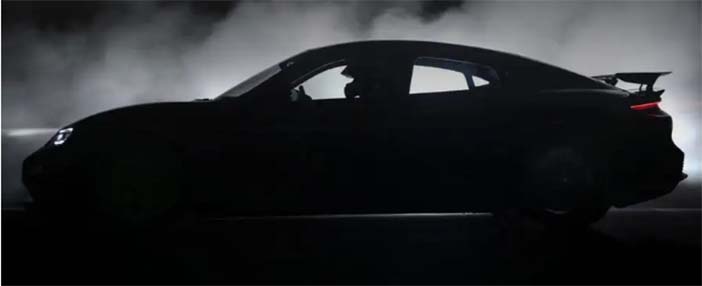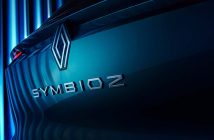+++ Rates of CAR THEFTS have been on the rise over the last decade or so, and one of the primary reasons may be a simple device that enables thieves, without any particular technical expertise, to exploit security vulnerabilities in keyless entry systems, which automakers have been aware of for over a decade. In recent years, we’ve seen more and more footage of vehicles being broken into with seemingly little effort. Using devices that are traded online for a few thousand euros, people who have no background in hacking or coding can now gain entry to a car and drive off with it in as little as 20 seconds. These devices, often disguised as handheld game consoles, are known as ’emulators’. They operate by intercepting the signal emitted by the car, which searches for the presence of a genuine key, and then transmits a signal to gain entry to the vehicle. Surprisingly, a significant number of Hyundai owners seem to have fallen prey to these sophisticated yet relatively affordable gadgets. And mind you, it’s not the Korean carmaker’s older models, with key-based ignition systems vulnerable to the notorious theft technique, but rather the new Ioniq 5. Many owners of the Korean EV are now employing steering locks to keep thieves at bay. Models from brands such as Toyota, Lexus and Kia have also fallen victim to the same issue. While the ease with which the thief drove away with his new EV was alarming, the truly astonishing aspect is that automakers have been aware of this potential vulnerability for over a decade. In 2011, a report from the University of California and the University of Washington shined a light on the security vulnerabilities of contemporary cars. Although key fobs have been around for decades, they said that modern “smart keys” that unlock a vehicle as the owner approaches and allow it to be started with the press of a button have offered criminals new security loopholes to enter through. However, the view among some automakers at that time was that car thieves weren’t sophisticated enough to exploit those vulnerabilities. These days, they don’t have to be. Thanks to the devices mentioned above, among other hacks, some vehicles open themselves up to criminals surprisingly easily. “There is a strong legal argument to say these cars are insecure and not fit for purpose”, said Nick Freeman, a lawyer in the United Kingdom. “The motoring industry has been negligent. It has failed to prioritize security and motorists are paying the price”. In England and Wales, the number of car thefts has risen from around 70.000 in 2014 to around 130.000 in 2023. Meanwhile, in the U.S., the Insurance Information Institute reports that car thefts rose by 25 percent between 2019 and 2022. Although that’s down to a number of factors, UK insurer Aviva recently reported that the owners of vehicles with modern keyless entry systems are twice as likely to report a car theft than those without. The London Metropolitan Police identified the Kia Niro EV and the Hyundai Ioniq 5 as vehicles that are particularly vulnerable to new theft devices, though the problem is not unique to the Korean brands. Hyundai told: “The criminals appear to be using devices to illegally override smart key locking systems”. +++
+++ The HYUNDAI N Vision 74 is one of the more talked-about concept cars of recent years and many enthusiasts are clamoring for it to be built. However, Albert Biermann, the mastermind behind the N division and Hyundai’s current executive technical advisor, doesn’t seem interested in the concept becoming a production reality. Biermann, who joined the Korean carmaker in 2015 after decades at BMW, believes that while a vehicle like the Hyundai N Vision 74 concept could attract significant attention for the N brand, their primary focus should be on producing vehicles that are affordable and practical for everyday use. “Yeah, it’s always nice to make some kind of ‘brand-shaper’ car, so if you say something exotic like N Vision 74: how many can you do? How many customers will enjoy this car every day? How many will you see on the road?”, he asked. “We are Hyundai N. We are not making show cars, we want to make cars for the kids, for the enthusiasts, and it has to be affordable, track day capable”. “If you have this €300.000 car, how much will you push it on the track? What is a sustainable value for a brand to make this car? We could get a lot of front pages for 2 weeks, 2 months, you get all the hype on the internet for 3 days or 5 days and that’s it. I want to see N cars on the road, as many as possible, the baby blue crazy cars, this is what we need on the road and not the front-page car for the very few who put them in the garage. That’s not my understanding of what the job is for Hyundai N”. Hyundai lifted the veil on the N Vision 74 in mid-2022. It pays homage to the design of the 1974 Hyundai Pony Coupe and was presented with a 62.4 kWh battery pack and a hydrogen fuel tank with motors producing a combined 670 hp and 900 Nm. While a report from late last year indicated this concept would spawn a limited-run production model, that will not be the case, at least based on the comments made by Biermann. However, it’s essential to recognize that Biermann’s preferences don’t necessarily dictate what reaches production. During our interview, he acknowledged that he has no interest in drifting and doesn’t care for the drift aids in the Ioniq 5 N and yet, they made it to the production model. He also said the synthetic engine sounds developed for the EV are the only important ones, not the futuristic, spaceship-like sounds the engineers also developed. +++

+++ JAGUAR will end production of the XE, XF and F-Type in a matter of weeks, as its Castle Bromwich factory in Birmingham prepares to transition to production of body panels for a whole new line of vehicles. The retirement of Jaguar’s 2 saloons and its flagship sports car means the brand’s line-up will become SUV-only, with just the I-Pace, E-Pace and F-Pace remaining on sale through 2024. Jaguar’s new era begins in 2025 with the introduction of a 600 hp electric 4-seat GT car in the vein of the Porsche Taycan, which is thought to be followed a year later by a Bentley Bentayga-style luxury SUV and then a large luxury saloon. All will share the firm’s new (and bespoke) JEA platform, and are entirely unrelated to its current models. Customers can still order a new XE or XF, but the models are being built to set specifications in their final few weeks of production, and as such are not available to configure. The news was broken by Jaguar’s North American CEO Joe Eberhardt, who said: “The majority of our products cease production in June, but they will be on sale for a much longer time. We will have a production schedule that enables us to have a continuous supply of vehicles until the new cars come. We’re trying to time it so we have enough volume to take us through to the launch of the new product and have a clean handover”. JLR has confirmed tthat Castle Bromwich will stop building cars in June, but it remains unclear how long it expects supply of the Brit-built cars to continue. The Birmingham site (originally used to build Spitfires and Lancaster bombers in World War II) was taken over by Jaguar Cars in 1977 and has historically produced the XK, XJ and S-Type. It was originally planned to build the electric XJ, but that project was scrapped in 2021, and Jaguar will now build its upcoming EVs elsewhere, beginning next year with the GT some 25 km away in Solihull. Last year, in its 8th year on sale, the BMW 3 Series-rivalling XE sold 9.935 units worldwide, compared with the larger XF’s 10.918; both significant increases on the year before, as testament to JLR’s ability to increase production of its more affordable models as the supply crisis eased. They were only outsold by the Solihull-built F-Pace, which claimed nearly 16.000 sales. The F-Type, which is more than a decade old, still recorded 2.678 sales worldwide last year. +++
+++ NISSAN is ending production of the current Leaf at its Sunderland plant this week, according to reports, as it gears up to build three new electric cars at the factory. The Leaf’s replacement is an electric crossover, expected to be revealed later this year ahead of a 2025 production start date. The other 2 cars will be the electric replacements for the Nissan Qashqai and Nissan Juke. Nissan began production of the first Leaf at Sunderland in 2013, which was 3 years after it was launched. The current, second-generation Leaf arrived in 2017. A Nissan spokesperson said: “The current generation of Nissan Leaf, the world’s first mass-market 100% electric vehicle, is approaching the end of its life cycle in Europe. “Depending on the market’s inventory, European customers will be able to place their orders until vehicle stocks run out. Nissan has already announced a new line-up of 100% electric vehicles for the European market to be produced in Sunderland plant as part of our commitment to sustainability and electrification”. Leaf production for other markets is expected to continue at the firm’s US and Japanese plants. European stock, built at Sunderland, will likely be sold until the end of the year. When the third-generation Leaf arrives in 2025, Nissan predicts it will build around 100.000 units a year at its Sunderland plant. This ambition will be supported by on-site battery partner Envision AESC, which is primed to open its new battery factory later this year with a capacity of 11 GWh and could eventually ramp up to 30 GWh. +++
+++ Porsche has just revealed an extensively overhauled version of its Taycan but already thoughts are turning to what a successor could look like, with the brand committed to retaining the name well into the future. Taycan model line boss Kevin Giek revealed that Porsche is confident there will long be a position in the range for the Taycan, even once the similarly sized PANAMERA goes electric in the future. “We have a high interest to keep it as a long-lasting car line, like the 911 – like we do with all our car lines”, said Giek. “When we decide to have a new model line, we don’t think about only having it for 3 or 4 years”, As the Taycan enters its 4th year on sale, it has been significantly upgraded in all key areas with learnings from the 150.000 owners it has since found homes with worldwide. Maximum range is up to 678 km, power to 952 hp and charging speed to 320 kW. However, Giek suggested this will not be the Taycan in its final form and hinted at plans to continue upgrading the model as new technologies and opportunities emerge. “We want to keep the Taycan as an innovator, to show what is possible and what is our definition of a electric sports car”, he said. “We will continue to improve the car all the time”. Aside from the Taycan’s demonstrable commercial success, it remains hugely important as a halo car (and technological base) for Porsche’s electric car line-up, which has been recently expanded with the new Macan and will soon be supplemented by a technically related Cayenne and a replacement for the Boxster. “The first Taycan was our first step into electric cars and there we learned a lot that we can now benefit from for all the others”, said Giek. Talk of the Taycan’s longevity (potentially it could enter into a new generation in around 2028 when the current car turns 8 years old) raises questions about how it could co-exist with any electric replacement for today’s petrol-powered Panamera saloon, which is only slightly larger in all dimensions. But Giek said the 2 model lines each serve a different purpose: “We think the segment of Panamera is more spacey, more luxury for its customers. It’s something totally different from what we see in the Taycan, which is more focused on sportiness: on real sports car behaviour. They are obviously different. Both have the right position on the market. Both make sense and we are sure we have the customers”. He stopped short of giving any hints as to what a new Taycan could look like, or how it might be technically differentiated from the current car, but he suggested that the priority would be technical (rather than visual) upheaval. He said: “We are developing the cars in an evolutionary way. Not a ‘big bang’ completely new thing. We will stay with our ‘flyline’. We will fight for a low car to keep this sports car’s characteristic”. However, Giek did confirm there are no plans to introduce a Taycan successor atop the PPE platform that underpins the new electric Macan. “PPE is a perfect SUV platform, but Taycan is not an SUV”, he said. +++
+++ PORSCHE is primed to reveal the most powerful Taycan yet built next week, with modified exterior bodywork, ramped-up performance and upgraded aerodynamics. The new edition of the electric sports saloon, which will top the range as “the most dynamic Taycan of all time”, was previewed by the German brand with an image that revealed a bespoke rear spoiler. We will find out more on 11 March, when the model will be unwrapped by Porsche’s product line vice-president Kevin Giek, former Le Mans racing driver Timo Bernhard and the brand’s development driver Lars Kern. The most powerful Taycan at present is the Turbo S Sport Turismo, which produces a staggering 952 hp and hits 100 kph from rest in just 2.4 seconds. Given Porsche has described this new version as the most powerful Taycan ever, it is likely to pack more than 1.000 hp. That would put the electric saloon within touching distance of the 1.030 hp Tesla Model S Plaid. The new Taycan will certainly benefit from boosted aerodynamics and downforce to handle its ramped-up performance. A high-performance Taycan was spotted testing on track in Germany in 2023. This Taycan prototype was seen with a significantly lower profile than any Taycan on sale today, with a large rear spoiler, a modified front bumper and slightly adjusted side sills. It was driven by Kern and fitted with a roll-cage and a racing seat, though the German firm hid other interior details. Similarly, Kern raced a pre-production Taycan around the Nürburgring Nordschleife at the start of 2024, setting a time of 7 minutes 55 seconds; 26 seconds faster than his previous record, set in a Taycan Turbo S Sport equipped with the model’s optional performance package. That pack includes 21 inch performance wheels with RS Spyder-design wheels and Pirelli P Zero Corsa tyres. It also adds a significant update to the Taycan’s chassis control system. To this day, the Taycan Turbo S Sport is the fastest electric car to lap the German circuit. +++

+++ The first electric RANGE ROVER prototype has been spotted testing, as the brand prepares to reveal its first EV in the coming months. New pictures suggest the debut electric Range Rover will be much lower, sleeker and longer in profile than the current Range Rover, potentially even with room for a third row of seats. It is not clear whether this is a prototype for the full-sized electric Range Rover due to launch later this year, or a separate model line entirely; it has been suggested the electric version of the flagship Range Rover model itself, launching later this year as the first EV to wear the Land Rover badge, will closely resemble today’s car. JLR is also preparing an electric successor to the Velar, though, which is closer in silhouette and ride height to the new test mule. Indeed, the roof profile, window line and ground-hugging suspension would seem to suggest that this is our first look at Range Rover’s Porsche Macan rival, which is due to be 1 of 3 electric SUVs built in Halewood, Merseyside, atop the brand’s new EMA platform. A sibling to similarly sized replacements to the Land Rover Discovery Sport and Range Rover Evoque, the electric Velar is tipped to enter production as early as this year, as the current model approaches the natural end of its lifecycle, having launched in 2017. Details of the next-generation model remain firmly under wraps, but clearly the company remains committed to its more overt road-going focus than the other models in the Land Rover line-up. Notably, in these images its body looks long enough behind the rear axle to accommodate a third row of seats. JLR has yet to give any indication that it plans to upsize the Velar, but a roomier interior would certainly mark it out more clearly from the Discovery Sport, which is seen as key to boosting sales. Last year, the Velar was the lowest-selling model in the Land Rover line-up with 18.626 sales, second only to the Discovery’s 13.164. By contrast, the Discovery Sport notched up more than 21.000 sales and the Evoque more than 34.000. The next Velar will also be more overt in its positioning as a luxury SUV, in line with JLR’s ambition to carve out each of its core model lines (Jaguar, Discovery, Defender and Range Rover) into distinct brands with their own design languages, values and target markets. +++
+++ RENAULT will continue to have internal combustion engines in its range for the next decade, as it hopes to offer consumers a separate lineup of EVs. The “2-leg” strategy was revealed by brand CEO Fabrice Cambolive. The approach hopes to allow the automaker to react to market trends following a slowdown in EV adoption. Unlike others, Renault has been relatively cautious in announcing their EV ambitions. In 2022, group CEO Luca de Meo predicted that Renault’s European lineup would consist solely of EVs by the end of the decade, but added a caveat that it would ultimately depend on market conditions. On a wider scale, the company stated that it didn’t foresee a world where gas and hybrid vehicles represent less than 40 percent of the market in 2040. Now, it appears that Renault is less bullish about its EV outlook. Cambolive stated that the brand would instead offer an EV and an ICE (with hybrid tech) in every segment. “For me, the question is not going EV-only in 2030: we will follow the trends with 2 very competitive offers in our lineup, on both legs”, said Cambolive. The move will see models such as the new 5 E-Tech being sold alongside the Clio, with both occupying similar positions in the B-segment. Renault isn’t the only one tweaking their product forecasts. Last week, Mercedes Benz backtracked on a prediction that EVs would account for 100 percent of sales by 2030, instead highlighting the continued development of ICE and hybrid tech into the next decade. Meanwhile, Renault and Chinese manufacturer Geely are in the process of forming a 50-50 joint venture that will see the 2 groups develop combustion and hybrid engines. The partnership will produce engines for brands from both Renault and Geely, including Volvo, Proton, Nissan, Mitsubishi and Punch Torino, and they may even supply third parties. +++



